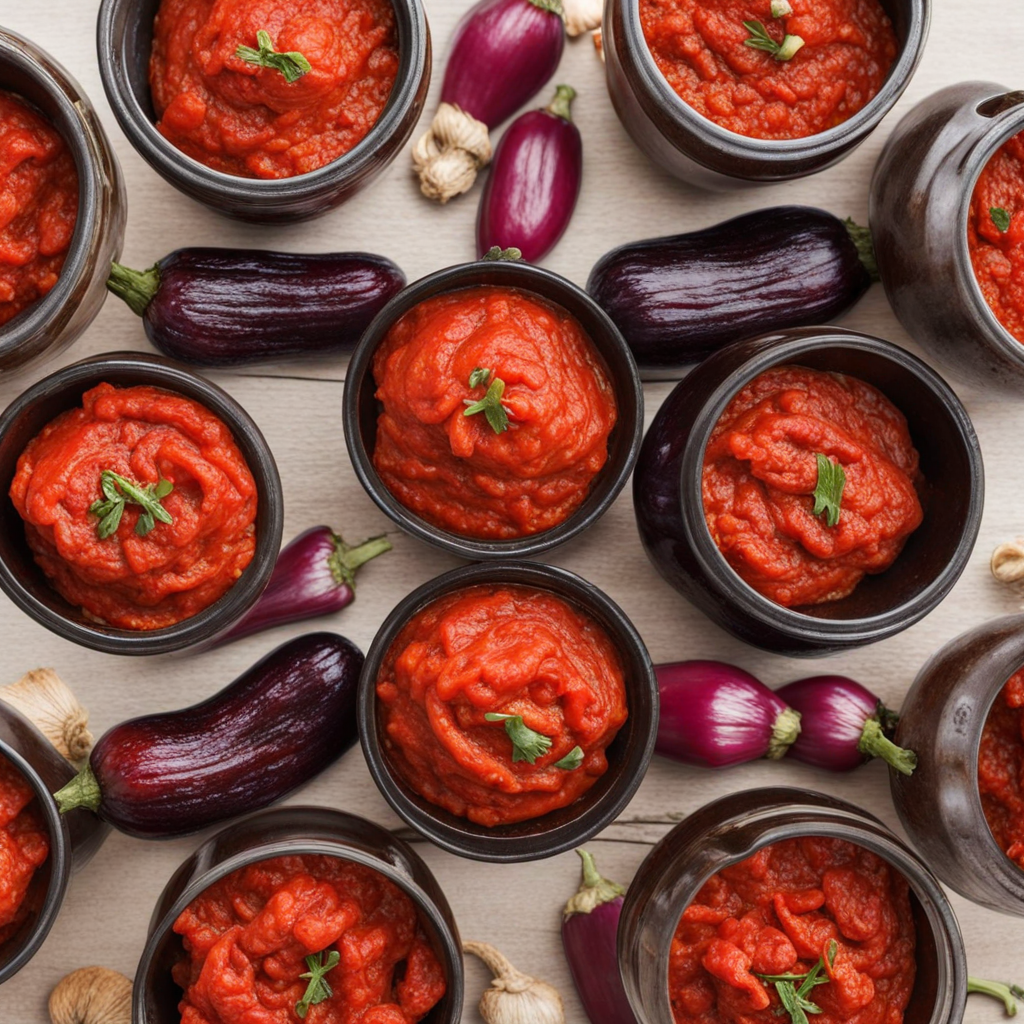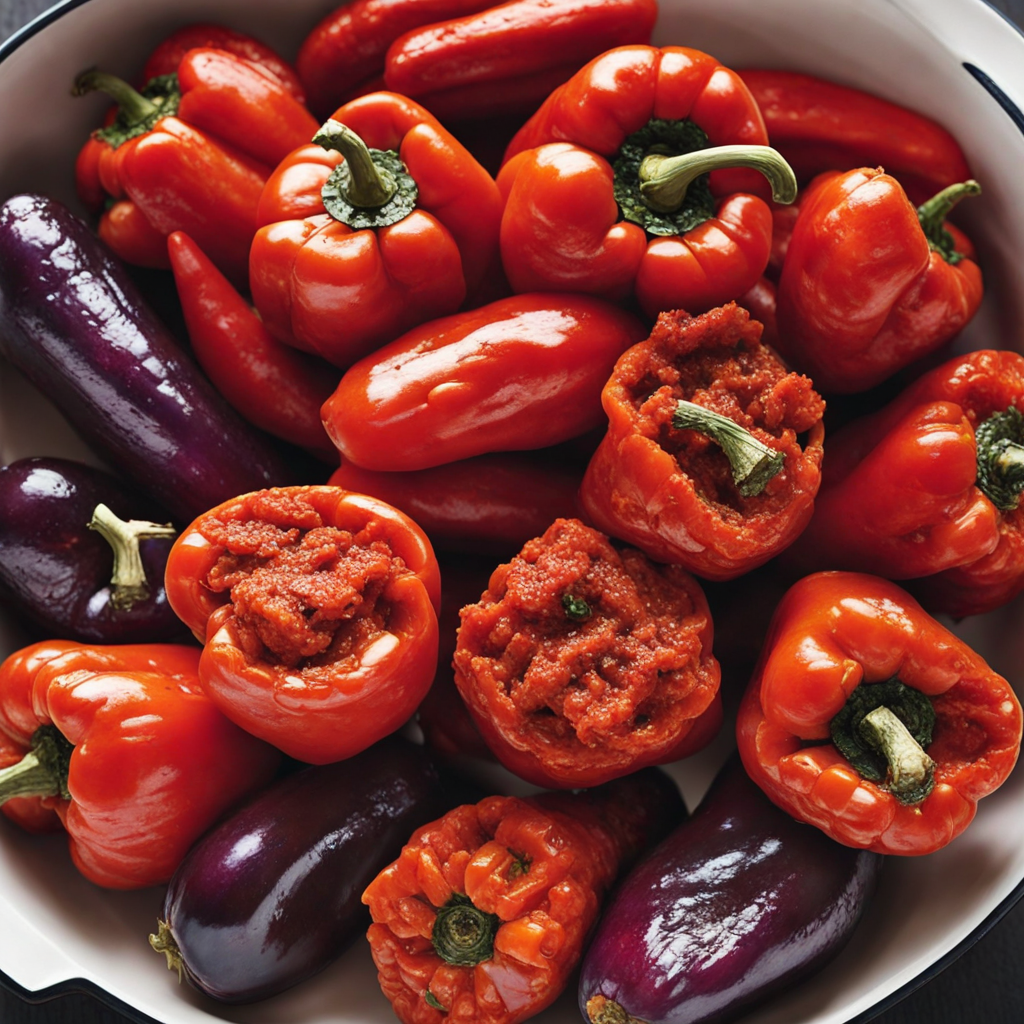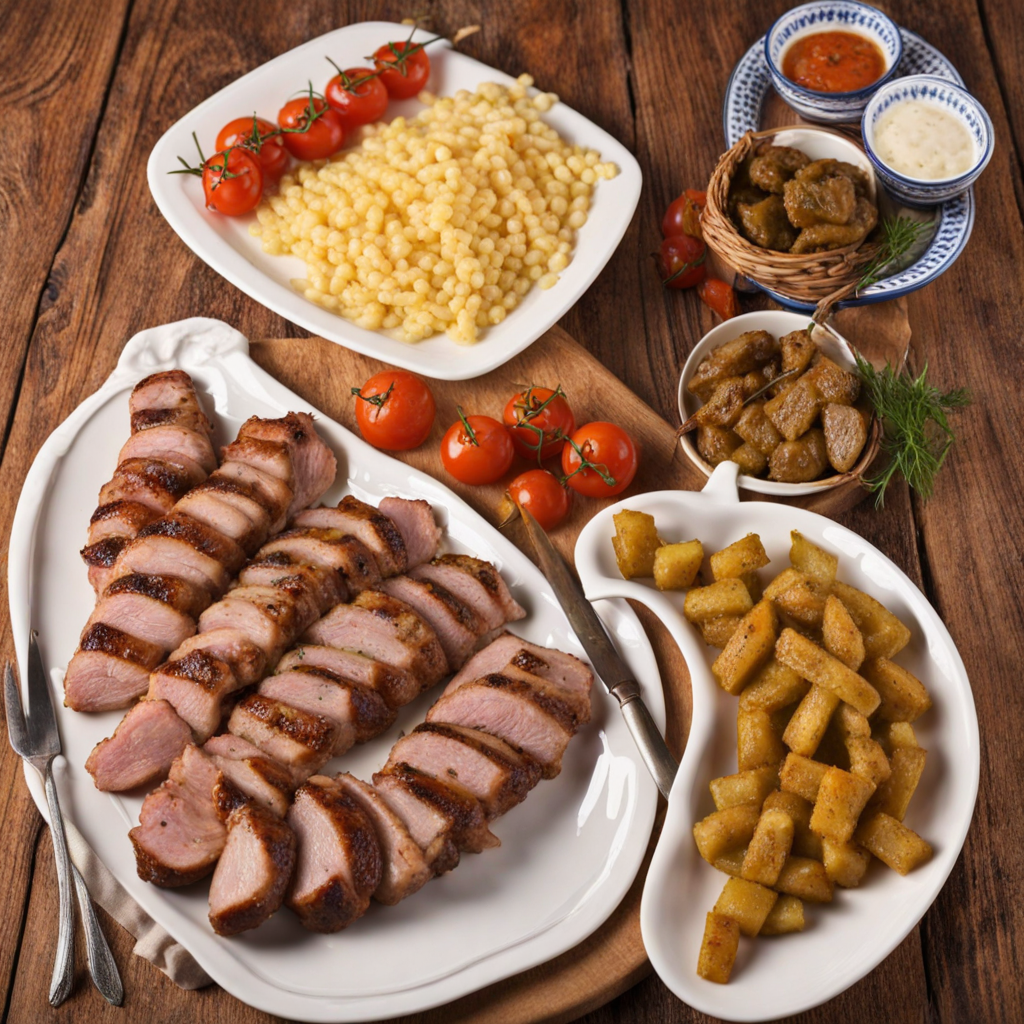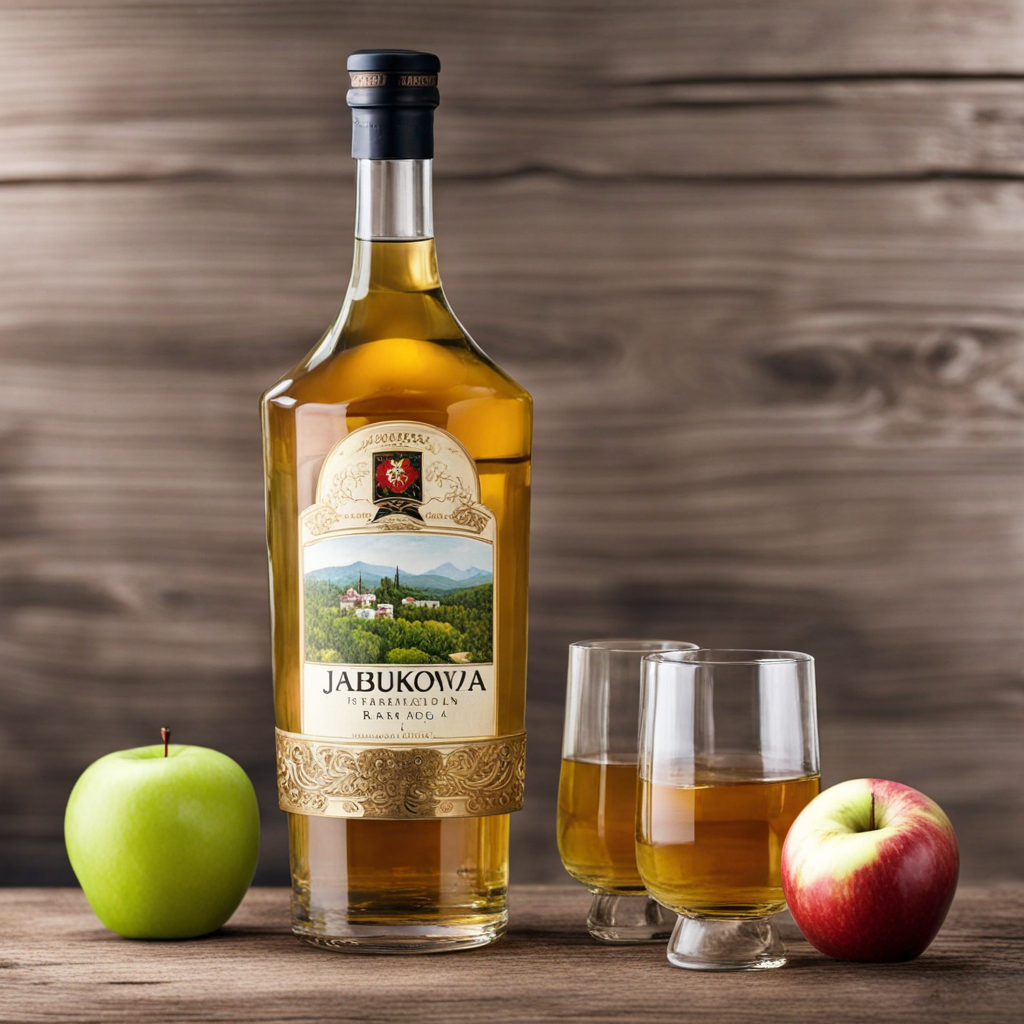Ajvar
Ajvar is a vibrant and flavorful condiment originating from Serbia, primarily made from roasted red peppers, eggplant, garlic, and a hint of chili. The star ingredient, the sweet red pepper, is typically roasted until charred, imparting a smoky depth that is further enriched by the earthy undertones of the eggplant. The combination of these ingredients is then blended or mashed together, resulting in a thick, spreadable paste that boasts a rich, ruby-red hue. The preparation of Ajvar is often a communal activity, especially during the harvest season, where families come together to roast peppers and create large batches, preserving the flavors of summer for the colder months ahead. What makes Ajvar truly special is its versatility. It can be served as a dip with bread, crackers, or fresh vegetables, making it an ideal accompaniment for gatherings and picnics. Alternatively, it can be used as a flavorful spread on sandwiches, burgers, or grilled meats, infusing them with a unique taste that elevates any dish. Its mildly spicy kick can be adjusted according to personal preference, with some variations featuring additional spices or smoked ingredients for an extra layer of flavor. Ajvar is not just a delicious addition to meals; it also embodies the rich culinary traditions of Serbia and the Balkans. It reflects a deep appreciation for seasonal produce and the art of preserving flavors. Enjoying Ajvar is an experience that connects you to the region's heritage and fosters a sense of community around food. Whether you’re savoring it as part of a rustic meal or exploring its myriad uses in modern cuisine, Ajvar promises an adventure in taste that is both satisfying and memorable.
How It Became This Dish
The History of Aјвар: A Serbian Culinary Treasure #### Origins of Aјвар Aјвар, a vibrant and flavorful condiment made primarily from roasted red peppers, eggplant, garlic, and often a hint of chili pepper, is a beloved staple in Serbian cuisine. Its roots can be traced back to the Ottoman Empire, where the cultivation of peppers became widespread across the Balkans. The name itself is derived from the Turkish word "hayvar," which means "preserve." This etymology hints at the dish’s early use as a means of preserving the rich flavors of summer vegetables for the colder months. The exact origins of aјвар are somewhat nebulous, as variations of this dish can be found throughout the Balkans, including in countries like North Macedonia, Bosnia and Herzegovina, and Croatia. However, Serbia is often credited with popularizing the condiment, particularly in the 20th century. It is believed that the modern form of aјвар emerged in the early 20th century, paralleling the rise of Serbian national identity and culinary traditions. #### Cultural Significance Aјвар is more than just a condiment; it is a symbol of Serbian hospitality and tradition. Often made in large batches and shared among family and friends, the preparation of aјвар is a communal event. During the late summer and early autumn months, families gather to roast peppers over open flames, filling kitchens and backyards with the intoxicating aroma of charred vegetables. The process of making aјвар is labor-intensive, involving peeling, mashing, and cooking the ingredients down to create a thick, rich paste. This communal preparation reflects the strong social bonds within Serbian culture, as families and friends come together to celebrate the harvest. Aјвар is traditionally served with bread, meats, and cheeses, and it frequently accompanies holiday feasts and gatherings. It is not uncommon to find a jar of aјвар on every Serbian table, serving as a reminder of home and heritage, regardless of where one might be in the world. For many Serbians living abroad, aјвар is a taste of nostalgia, evoking memories of childhood and family gatherings. #### Development Over Time As the 20th century progressed, aјвар evolved alongside changes in Serbian society and culinary practices. After World War II, the rise of industrial production led to the mass production of aјвар, making it more accessible to the general public. Canned and jarred versions became widely available, allowing people to enjoy this traditional dish without the labor-intensive process of making it from scratch. However, while commercial aјвар made its way into households, many still preferred the homemade variety, which is often richer and more flavorful. The 1990s were a tumultuous time for Serbia, marked by political upheaval and economic hardship. Despite these challenges, aјвар remained a constant in the lives of many Serbians. It became a symbol of resilience and adaptability, as families found comfort in preparing and sharing food amidst uncertainty. The condiment also gained international recognition, as Serbian diaspora communities introduced aјвар to new regions, leading to its appreciation beyond national borders. In recent years, aјвар has experienced a renaissance, with a growing interest in traditional cooking and local ingredients. Chefs and food enthusiasts have embraced the craft of making aјвар, experimenting with different variations and flavors. While the classic recipe remains popular, contemporary interpretations often include additional ingredients like walnuts, sun-dried tomatoes, or even truffles, expanding the possibilities of this beloved condiment. #### A Jarring Experience: The Art of Aјвар Making Crafting a perfect batch of aјвар is considered an art form, requiring skill and patience. The process typically begins with selecting the right peppers—red bell peppers are most common, but many prefer to use a specific variety known as "roguette" for its sweetness and smokiness. The peppers are then roasted over an open flame or in an oven until the skins are charred and blistered. This step is crucial, as it imparts a deep, smoky flavor to the final product. Once roasted, the skins are peeled off, and the peppers are blended with cooked eggplant, garlic, and sometimes a dash of vinegar or lemon juice for acidity. The mixture is then simmered until it thickens, allowing the flavors to meld together beautifully. The end result is a rich, spreadable condiment that can vary in texture from chunky to smooth, depending on personal preference. Traditionally, aјвар is preserved in jars, making it suitable for long-term storage. Many families still adhere to the practice of sealing their homemade aјвар in glass jars, often labeling them with the date and type of pepper used. This practice not only ensures that the flavors are preserved but also adds a personal touch to the culinary tradition. #### A Culinary Bridge Aјвар has transcended its role as a simple condiment to become a cultural bridge in the Balkans. It is often used as a versatile ingredient in various dishes, from pasta sauces to dips and spreads. Its adaptability has allowed it to find a place in modern gastronomy, where chefs are increasingly recognizing the importance of incorporating traditional flavors into contemporary cuisine. Food festivals and events dedicated to aјвар have sprung up in Serbia and surrounding countries, celebrating its rich heritage and encouraging local producers to showcase their artisanal varieties. These gatherings not only promote the condiment but also foster a sense of community among those who share a passion for preserving culinary traditions. #### Conclusion In conclusion, aјвар is more than just a condiment; it is a delicious reflection of Serbian culture, history, and identity. From its humble beginnings as a means of preserving summer's bounty to its status as a culinary icon, aјвар embodies the spirit of togetherness and resilience. As it continues to evolve and adapt, it remains a cherished part of Serbian heritage, bringing people together around the table, one jar at a time. Whether enjoyed at home or shared with friends, aјвар is a testament to the enduring power of food to connect us to our roots and to each other.
You may like
Discover local flavors from Serbia







